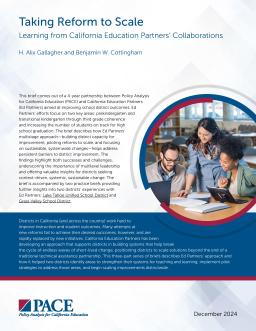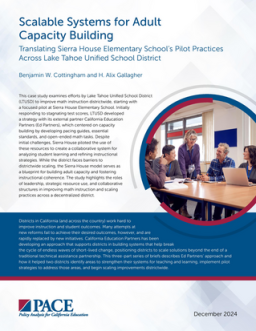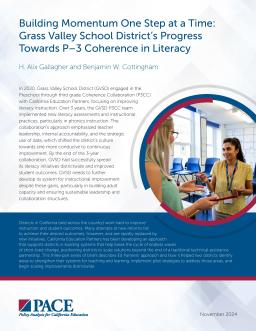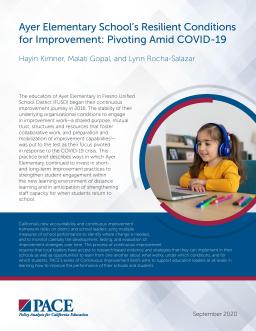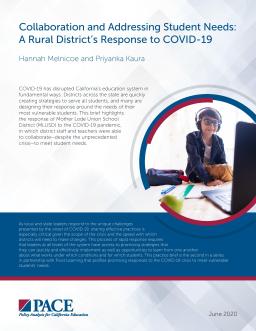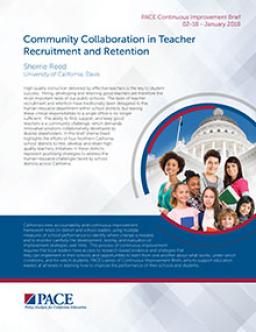Learning from California Education Partners’ Collaborations
Published
Summary
This brief introduces a three-part series describing California Education Partners’ multistage approach to supporting school districts with improving their students’ outcomes in literacy and mathematics. The approach addresses persistent barriers to improvement by building capacity in the district, piloting reforms, and focusing on scaling changes systemwide in sustainable ways. PACE authors highlight the successes and challenges of Ed Partners’ approach, emphasizing the fundamental importance of leadership at the teacher, school, and district levels to drive change throughout the district.
Translating Sierra House Elementary School’s Pilot Practices Across Lake Tahoe Unified School District
Published
Summary
This case study explores how Lake Tahoe Unified School District worked to improve math instruction, starting a pilot at Sierra House Elementary School. Partnering with California Education Partners, LTUSD addressed stagnant test scores by developing pacing guides, essential standards, and open-ended math tasks. Sierra House used these tools to create a collaborative system for analyzing student learning and refining instruction. While scaling districtwide remains a challenge, the Sierra House model highlights leadership and resource use with collaboration in advancing instructional coherence.
Grass Valley School District’s Progress Towards P–3 Coherence in Literacy
Published
Summary
Grass Valley School District (GVSD) partnered with California Education Partners through an initiative to improve literacy instruction. Over three years, GVSD implemented new literacy assessments and phonics practices, emphasizing teacher leadership, data use, and accountability. That shifted the district’s culture toward continuous improvement, enabling districtwide adoption of literacy initiatives and improved student outcomes. This case study highlights the need for stronger systems to build adult capacity and sustain leadership and collaboration.
Pivoting Amid COVID-19
Published
Summary
This brief outlines Ayer Elementary's journey of continuous improvement since 2016 and how their organizational conditions were tested during the COVID-19 crisis. Despite the challenges, the school invested in improvement practices to strengthen student engagement in distance learning and build staff capacity for when students return to school.
A Rural District’s Response to COVID-19
Published
Summary
COVID-19 has disrupted California’s education system in fundamental ways. Districts across the state are quickly creating strategies to serve all students, and many are designing their response around the needs of their most vulnerable students. This brief highlights the response of Mother Lode Union School District (MLUSD) to the COVID-19 pandemic, in which district staff and teachers were able to collaborate—despite the unprecedented crisis—to meet student needs.
Published
Summary
Teacher recruitment and retention are critical responsibilities of school districts. The challenge of finding, supporting and retaining good teachers requires innovative solutions collaboratively developed by diverse stakeholders. This brief highlights the efforts of four Northern California school districts to address human resource challenges and hire, develop and retain high quality teachers, which represent promising strategies for other districts across California.
